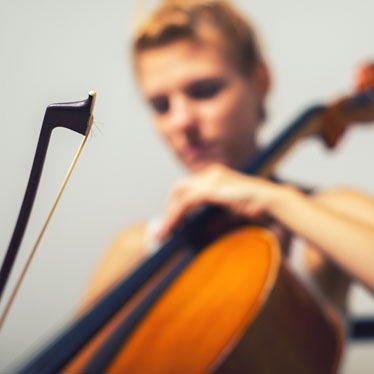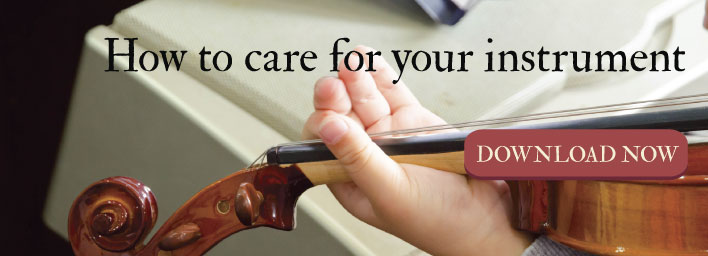
Practice makes perfect, right?
It's actually best-practices that make "perfect" (or the next-best thing to it). If you have poor cello practice habits, you'll develop incorrect posture, finger positions and other technical no-nos that make it difficult to progress as a musician and will make it increasingly challenging to ascend in chair positions or land a cello part in a desirable ensemble group.
Dos and Don'ts for Healthy Cello Practice Habits
As much as we encourage the "Dos" of instrument practice, learning the "Don'ts" (aka, the what-not-to-dos) can be equally helpful.
DO: Play a correctly-sized cello
It's always important that musicians play correctly-sized instruments. This is especially true with respect to larger string instruments such as cello or bass. Failure to do so puts you at-risk for injury and makes it more difficult to master the instrument.
Your instructor and/or employees at the instrument shop will assist you in finding a correctly-sized cello for your body.
DON'T: Neglect to purchase an endpin anchor (stop) so the tip doesn't slide on the floor/carpet, and/or an endpin strap, which does the same. Other important cello accessories include extra rosin, replacement strings, a wheeled case and a mute (if you live in an apartment or want to practice at quiet times in the house).
DO: Create a personalized, efficient practice space
The space you practice in is instrumental to the success of your practice sessions. While all musicians appreciate the idea of a bona-fide practice room, room's corner may have to suffice.
Take time to create a personalized and efficient corner, closet, or space that accommodates a clutter-free, distraction-minimal practice experience. Make sure it has everything you need - from tuner, to rosin, to stand and music, to an ergonomically-friendly seat, etc. The idea is that once seated, you shouldn't have to move or break your concentration until the practice session is completed.
DON'T: Overdo your practice length
Perfectionists and newly-awarded soloists (or cellists with over-eager parents) can wind up burning out for the sole reason that they practice too much. The subconscious is a powerful force and you'll be amazed at how much "work" it does, improving cello technique, ear and muscle memory when it has enough downtime to practice all you've learned.
The ideal practice length is between 30- and 60-minutes per day, roughly five-days a week. Young/beginner students should practice for the 30-minute side to avoid burn-out, boredom or overuse injuries.
DO: Tune your cello every time you practice
Even if band or orchestra is your last class of the day, you should still tune the cello each and every time you play, including when you practice. In fact, many cellists re-tune every 15-minutes or so during rehearsals to accommodate any changes that have caused strings or pegs to slip out of tune during play.
Among other things, playing a cello in-tune is key to developing the ear training and muscle memory required to play your music in-tune with others. Also, tuning your cello each time allows you to familiarize yourself with the sounds, signs or feeling that indicate it's time for a string change.
DON'T: Rely on others so change your strings
On that note: changing the strings on a cello is something you should learn to do by yourself pretty early on in the game. While young children will need assistance for a while, older children and adolescents are certainly capable of doing it themselves, even if they require supervision the first few times.
Changing strings is a regular occurrence because strings wear out and sound quality diminishes as strings age. Learning to change them yourself, and to perform other simple repairs is a good idea - and will save you lots of money in the long-run.
DO: Warm-up your fingers, arms and wrists at the beginning of each rehearsal
All strings players must perform warm-ups to avoid injury. Cellos require a tremendous amount of physical engagement so do stretches, warming-up the muscles in your fingers, wrist, arms, shoulders, neck and back, before you sit down to practice. Then, adhere to the scales, finger warm-ups and other exercises suggested by your teacher to improve finger dexterity.
DON'T: Ignore your body's messages
Does your back hurt? Do you have a hot, tingly sensation between your shoulder blades or at the base of your neck? Are elbows or forearms feeling uncomfortable? All of these are signs that you may:
- Not be playing with correct posture
- Need a break
- Not be using correct technique
- Not have warmed-up enough
- Be practicing too much
Ignoring signals of pain or discomfort in your body will lead to injury. Speak to your cello instructor and they'll figure out the source of the pain as well as the solution.
These cello practice Dos and Don'ts will support you on your way to becoming an ever-more proficient cellist.


